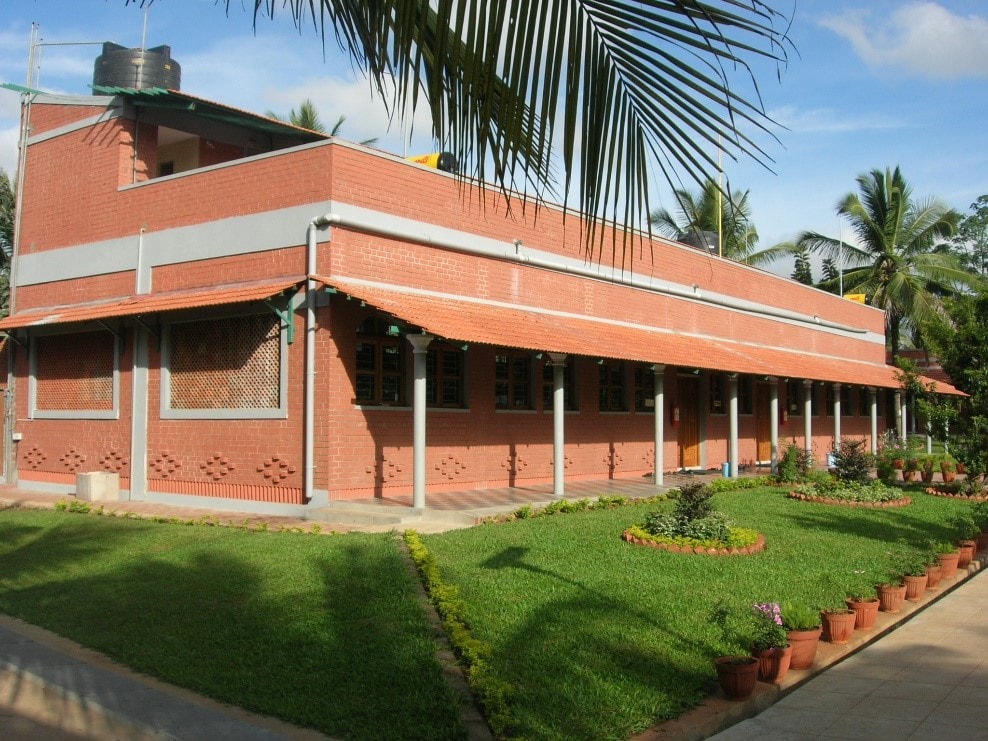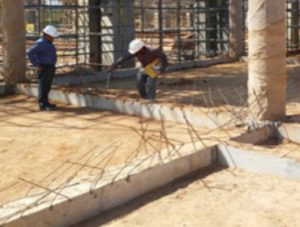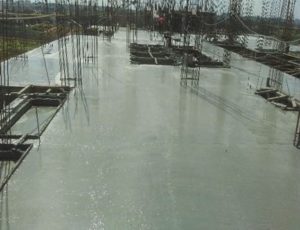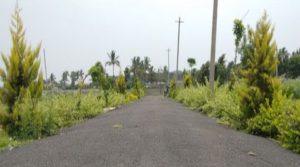Brickwork :
- A. Tools required for brickwork:
Masons Trowels (small and medium), Line thread, Sand Sieve, Spades, Pans, measuring boxes, Metal tray, Tube levels, Plumb bobs, Measuring Tape, Spirit levels 1-2 m, Aluminum straight edge, Right angle, Chipping Tools, Masons hammer, Levelling threads, Masons brushes and buckets, Water Barre and Wheel barrows
- B. Procedure for constructing brick masonry:
- Make sure that the correct proportion of cement Mortar CM is used for brickwork. Generally it is advised 1:6 for 230 mm brickwork and 1:4 for 110 mm brickwork.
- Always use well soaked bricks in water for a period of at least 2 hours before the commencement of brickwork. This is because, to prevent absorption of moisture from the cement mortar.
- 3. Mixing of Cement Mortar:
- Proper mixing is required for Cement mortar, first in dry condition two times, and adding water for the central dip portion of dry mortar bund by thorough mixing, until mortar turns into uniform colour and consistency.
- Always mix cement mortar in metal tray to avoid cement slurry overflowing.
- 4. Brick masonry :
- Bricks placed over concrete surface such as plinth beams, beds etc. the mortar is to be evenly spread over the bed for full width of brick.
- Frog: Keep the upper most surface with 10 mm to 20 mm depth, to form a key for holding mortar called Frog up, while placing each and every brick.
- All the bricks are placed with gaps not more than 10 mm and fill these joints between the bricks properly.
- RCC Band : Use concrete bed of 75 mm thick, with M 20 grade, and reinforcement of 2 No. of 8 mm rods, at every 1 m height for partition wall or 4” brickwork.(Fig.1)
- Pointing: In order to provide a good bondage between brickwork and forthcoming plaster over brick side surface, brick joints must be raked (pointing) to an average depth of 10 mm when mortar is green.
- If bricks are exposed without plaster then as per architect’s instruction, either the joints should be struck flush or may be with light pointing of 2-3 mm depth.
- Raking joints: Existing or dry surface are properly cleaned by removing all plastered surfaces, dust and dry mortar and it should be thoroughly wet. The joints shall raked before commencing new construction.
- Hacking: It is very important to be done for all concrete surfaces, where brickwork built over in contact, should be done for better bondage.
- English bond: All Courses must be truly horizontal and constructed should follow suitable bond pattern to break the vertical joints. A brick masonry with English bond is preferable.
- Toothing for brick work: Always the brickwork shall be raised uniformly from one end , but in case of intermediate walls or cross walls (buttress, counter – forts) to be inserted with the main wall, the suitable toothing or grooves or steps to be provided for continuation of brickwork.(Fig.2)
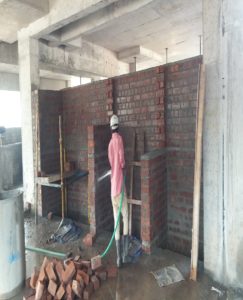
- Specified cement mortar say 1:4 or 1:6 must be placed within 30 minutes after addition of water.
- Caution: Due to the less surface area, which weakens the masonry wall, Bricks on edge must not be used unless specified by architect.
- 9” brick wall: Brick Masonry may be raised up to 5’0” in a day.
- Raising with all connected brick work be carried out up to the same level.
- For construction of 230 mm thick wall, maintain one face in line. This brick side face can be pre – planned in such a way that, it should take all kinds of single coat plasters.
- For more than 230 mm width of walls, both faces should maintain good alignment.
- Base Course: First course, or base course or marking course of brickwork needs to be laid under technical supervision for openings like door, window, or other openings to be kept accurately as per the architectural drawings.(Fig.3)
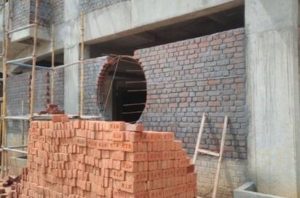
- Quality Inspection: The brick masonry should be carried out as per basic civil engineering principle that right alignment, level and plumb.
- For this purpose, best line threads, measuring tapes, Level tubes, aluminum straight edges and plumb bobs must be utilized for quality inspection and checking.
- Exposed brickwork using wire cut bricks including jolly work for windows with circular RC columns for veranda is a classic example for quality work and inspection.(Fig.4)
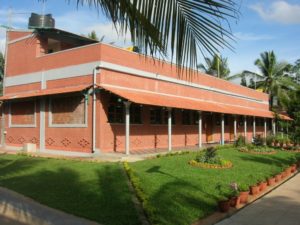
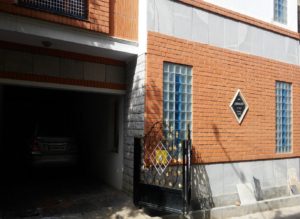
- Creativity : Similarly by using different kind of materials including bricks, some creative experiments like Exposed Wire cut brickwork, Granite cladding, Glass block work and Machine cut rough stone work for Ashlar masonry etc. can be achieved by maintaining harmony among these elements.(Fig.5)
- Curing: Curing must be done for at least seven days for masonry walls and strictly monitored by mentioning date of masonry over brick walls.
Share on facebook
Facebook
Share on whatsapp
WhatsApp
Share on twitter
Twitter
Share on linkedin
LinkedIn
Share on pinterest
Pinterest

